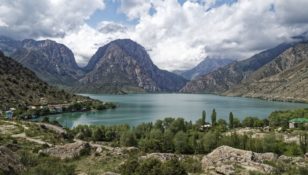Rejse Marokko: Explore the Rich Culture and History of Morocco

Introduction:
Rejse Marokko, or traveling to Morocco, is an adventure that promises to immerse you in a world of vibrant culture, stunning landscapes, and fascinating history. As a traveler, it is important to understand the essentials of visiting this captivating country, from its diverse geography to its unique customs. In this comprehensive guide, we will provide you with valuable insights into planning your trip to Morocco and ensure that you make the most of your experience.
I. The Allure of Morocco:

– Breathtaking Landscapes: Morocco offers a diverse range of landscapes, including the majestic Atlas Mountains, the vast Sahara Desert, and the rugged coastline along the Atlantic Ocean. Whether you are a nature enthusiast or a thrill-seeker, Morocco has something to offer.
– Vibrant Culture: The Moroccan culture is a vibrant tapestry woven with influences from various civilizations, including Berber, Arab, and French. From the bustling souks (markets) to the enchanting riads (traditional houses), you will be captivated by the rich heritage and warm hospitality of the Moroccan people.
– Exquisite Cuisine: Moroccan cuisine is a fusion of flavors and spices that tantalize your taste buds. Indulge in tagines, couscous, and mint tea as you savor the gastronomic delights of this gastronomically diverse country.
– Architectural Marvels: Morocco boasts an impressive array of architectural wonders, such as the iconic mosques of Casablanca, the exquisite palaces of Marrakech, and the ancient Roman ruins of Volubilis. Each city offers a unique architectural perspective that showcases the country’s historical and cultural significance.
II. A Historical Journey:
Morocco’s history spans centuries and is marked by the influence of different empires and dynasties. Understanding its historical development will provide you with a deeper appreciation for the country’s cultural tapestry.
– Ancient Roots: Morocco’s history can be traced back to ancient times, with evidence of early Berber settlements. Discover the fascinating rock carvings, cave paintings, and archaeological sites that offer glimpses into the past.
– Arab Conquest: The 7th century marked the Arab conquest of Morocco and the introduction of Islam, which heavily influenced the culture and architecture of the country.
– Dynastic Rule: From the Almoravids to the Almohads, each dynasty left its mark on Morocco, shaping its political landscape and architectural heritage. Explore the medieval cities of Fes and Marrakech, known for their impressive medinas (old towns) and intricately designed mosques.
– Colonial Era: The 20th century saw Morocco under French and Spanish occupation, which has left a lasting European influence on the country. Discover the art deco buildings in Casablanca and the Spanish fortifications in Tangier.
III. Planning Your Trip:
1. Entry Requirements:
– Visa: Check if you need a visa to enter Morocco and ensure that your passport is valid for at least six months beyond your planned departure date.
– Vaccinations: Consult with your healthcare provider to determine if any vaccinations are required or recommended for your visit to Morocco.
2. Best Time to Visit:
– Climate: Morocco experiences diverse climates, ranging from Mediterranean in the north to desert in the south. The best time to visit is during spring (March to May) and autumn (September to November) when the weather is mild and comfortable.
– Avoiding Crowds: Consider visiting during the shoulder seasons to avoid the peak tourist crowds and enjoy more affordable accommodation rates.
3. Must-See Destinations:
– Marrakec Explore the bustling medina, the vibrant Jardin Majorelle, and the historical Bahia Palace. Don’t miss the mesmerizing Djemaa el-Fna square, where you can immerse yourself in local street performances and indulge in delicious street food.
– Fes: Lose yourself in the narrow alleyways of the medina, visit Al Quaraouiyine University, one of the oldest universities in the world, and admire the ornate beauty of the Bou Inania Madrasa.
– Chefchaouen: Known for its blue-washed streets, Chefchaouen offers a peaceful escape from the bustling cities. Explore its charming medina, hike in the nearby Rif Mountains, and marvel at the stunning panoramic views.
4. Cultural Etiquette:
– Dress Code: Respect the local customs by dressing modestly, especially when visiting religious sites and rural areas. It is advisable for both men and women to keep their shoulders and knees covered.
– Ramadan: If you are visiting during the holy month of Ramadan, be mindful of the fasting practices and avoid eating, drinking, or smoking in public during daylight hours as a sign of respect.
In conclusion, traveling to Morocco is an enriching journey that offers a blend of ancient traditions, awe-inspiring landscapes, and a vibrant cultural tapestry. From the bustling souks to the serene Sahara, Morocco has something to captivate every traveler. By immersing yourself in the country’s rich history, understanding its cultural nuances, and planning your trip meticulously, you will create memories that will last a lifetime. So pack your bags, embark on this adventure, and let Morocco’s wonders unfold before your eyes.

















